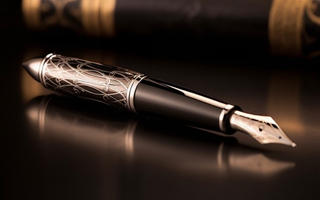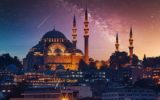
On September 29, 1968, nearly 40,000 people gathered in Cape Town, South Africa, regardless of religion, language, race, or color to attend the funeral of a departed soul. They had come together to pay their respects and participate in the funeral prayer of a man who had always led the funeral prayers for others. Now, he lay on the funeral bier, awaiting his own funeral prayer and seeking forgiveness from the congregation.
Cape Town was witnessing one of those rare funerals where such a large crowd had gathered.
The man for whom the funeral prayer was being offered had lost his life, according to official claims, after 123 days of detention in solitary confinement, without being presented before a judge or allowed any contact with others. It was reported that he had "fallen" to his death from a staircase landing.
Victor Wessels, a Marxist teacher who attended the funeral, would later say, "He did not give his life only for Muslims, he died for his cause, the cause of those who suffer injustice."
The coffin carrying his body, which had suffered broken ribs and bruises at 27 different locations, was transported 10 kilometers to the Muslim cemetery in Mowbray.
Having been orphaned since infancy, the departed left behind a widow and three orphaned children.
That day, Cape Town would not only witness the funeral prayer attended by the throng of people but also experience the country's largest earthquake in history. A 6.3 magnitude earthquake struck with its epicenter in Tulbagh, shaking Cape Town. It was as if the earth's crust did not want to remain silent about the death (or killing) of the departed and gave a warning. The person whose funeral prayer was being held that day was Imam Abdullah Harun, who had packed incredible stories into his short 45 years of life.
Imam Abdullah Harun was born into a Malaysian family as the youngest child. He lost his mother as a baby and was raised by his childless aunt. After completing elementary school, he went to Saudi Arabia to pursue religious studies.
When he was appointed as an imam at the El Camia Mosque in Cape Town - Claremont in 1955, he was one of the youngest imams in South Africa.
When we look at Imam Harun's history as an imam, a completely different portrait emerges.
It is difficult to classify him as a conventional mosque imam. In fact, he embodied the essence of the word imam, being a leader, a pioneer, and someone who had taken the lead. In a time when the darkness of oppression and repression engulfed the country and ignorance hit rock bottom, he became an exemplary figure, paying the highest sacrifice, his life, in the struggle against the inhuman atrocities symbolized by the Apartheid regime.
He dedicated himself to his faith, his community, and humanity. His activities aimed to invigorate a stagnant society and raise awareness against the inhumane atrocities prevailing under the Apartheid regime.
He had secretly traveled to Egypt to meet with exiled politicians and the World Islamic Council.
In addition to his daily public activities, Imam Harun also participated in covert operations against apartheid. He did not even share his secret activities with his wife to protect his family. But with his death, his secrets went with him, and this aspect of his activities is not widely known.
Imam Harun did not forget the media aspect and strengthened his work with the "Muslim News" newspaper, which was published from 1960 to 1986 in Cape Town, along with some of his friends. He served as the editor of the newspaper until his death.
Imam Harun was arrested by the police in Cape Town on May 28, 1969. He was held in a cell for 123 days and subjected to daily interrogations and torture. The police reported that he fell to his death from a stairwell on September 27.
Imam Harun's family never believed this account. The investigation was reopened last year, and the trials are still ongoing.
The process leading to Imam Harun's death under torture began 54 years ago today, with his arrest.
Named after Imam Harun, Haroon Gunn-Salie created an art cemetery called "Cry for Justice" in memory of the Imam and 118 others who lost their lives in detention. It consists of empty graves, and from above, the English word "Justice" can be read.
Imam Abdullah Harun's life and struggle were a "Cry for Justice." He fought for human dignity, transcending religious boundaries.
He worked among Muslims, but his greatest sacrifice was made on behalf of humanity. His activities paved the way for a profound wave from below. The mission of the man who lit the torch should never be forgotten.
Hello, the comments you share on our site are a valuable resource for other users. Please respect other users and different opinions. Do not use rude, offensive, derogatory, or discriminatory language.
The floor is all yours.








